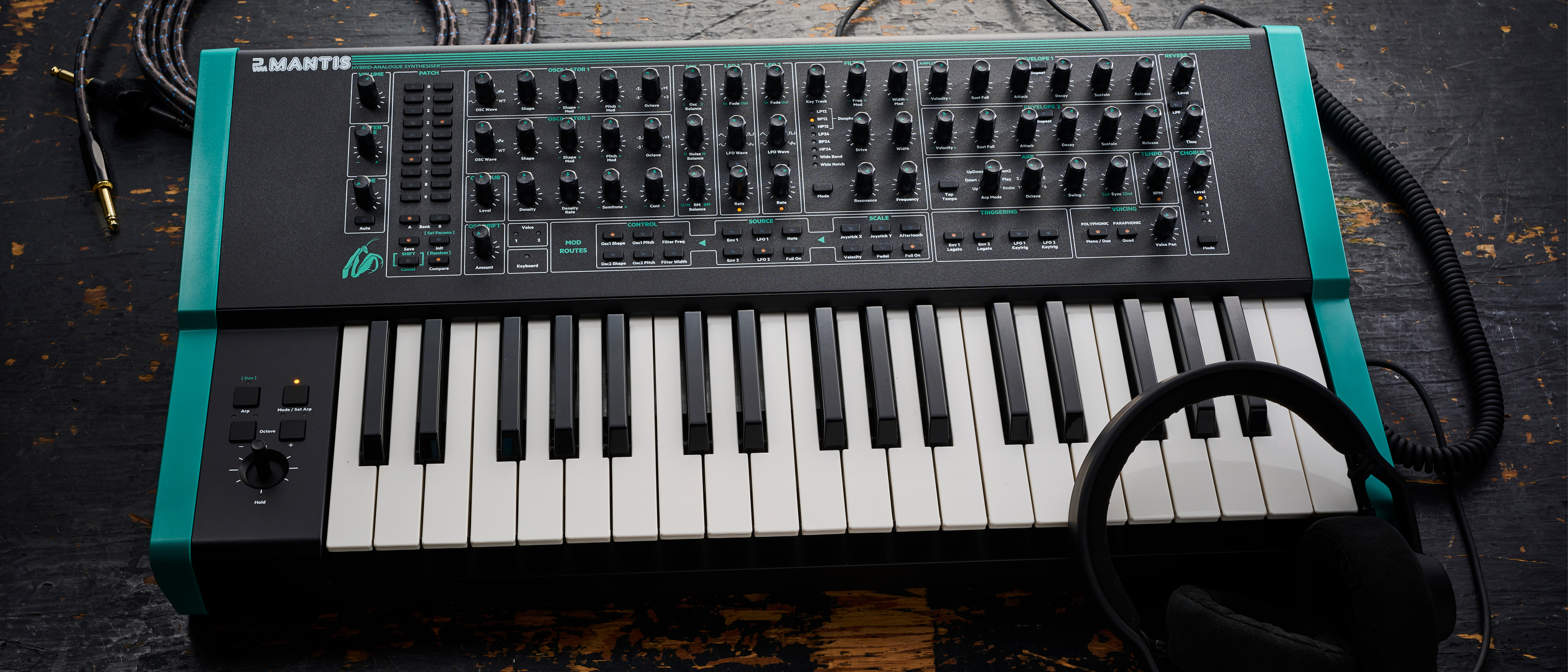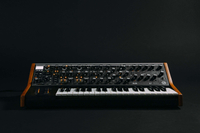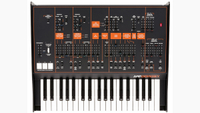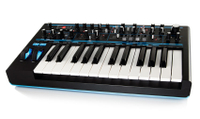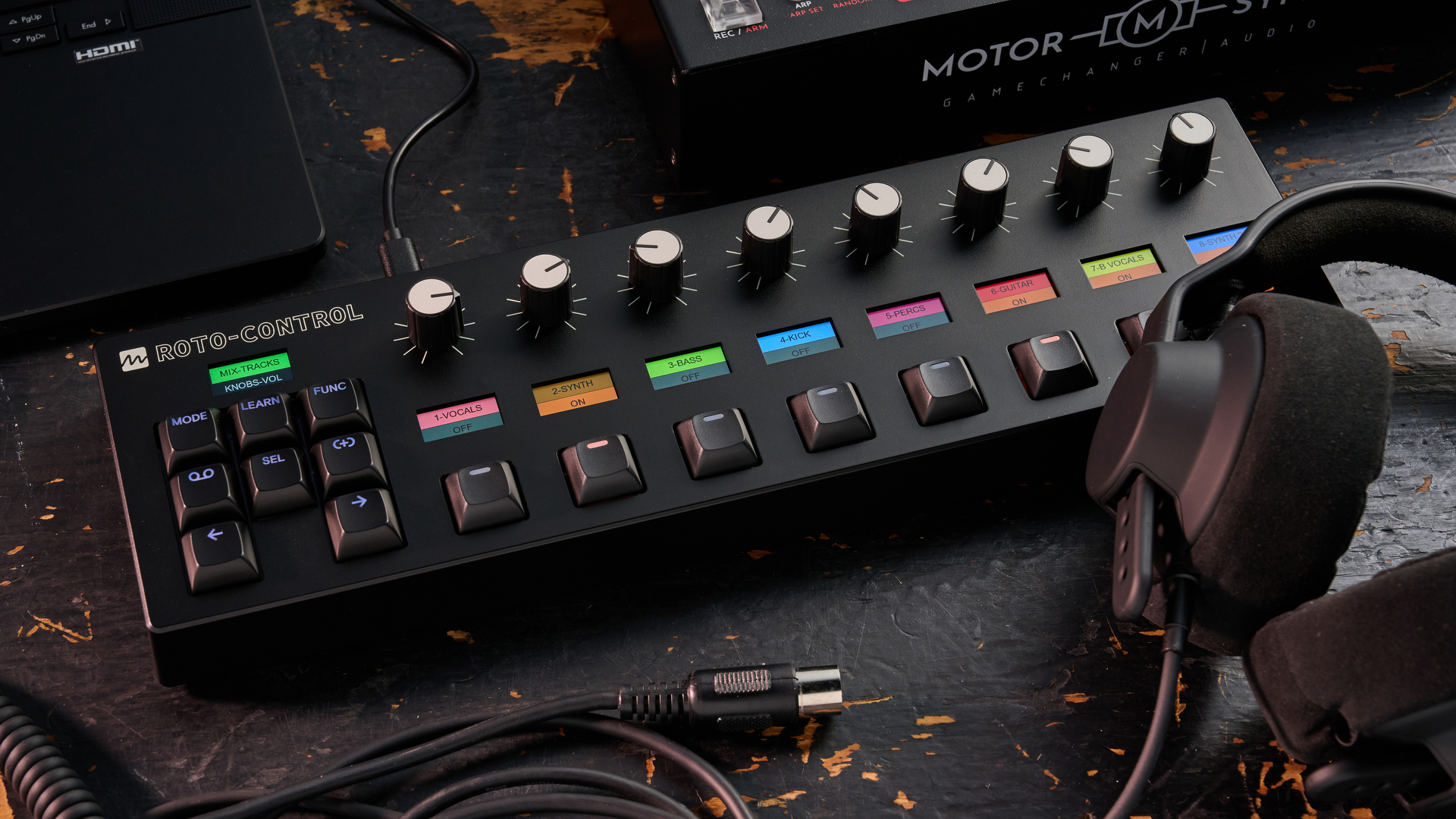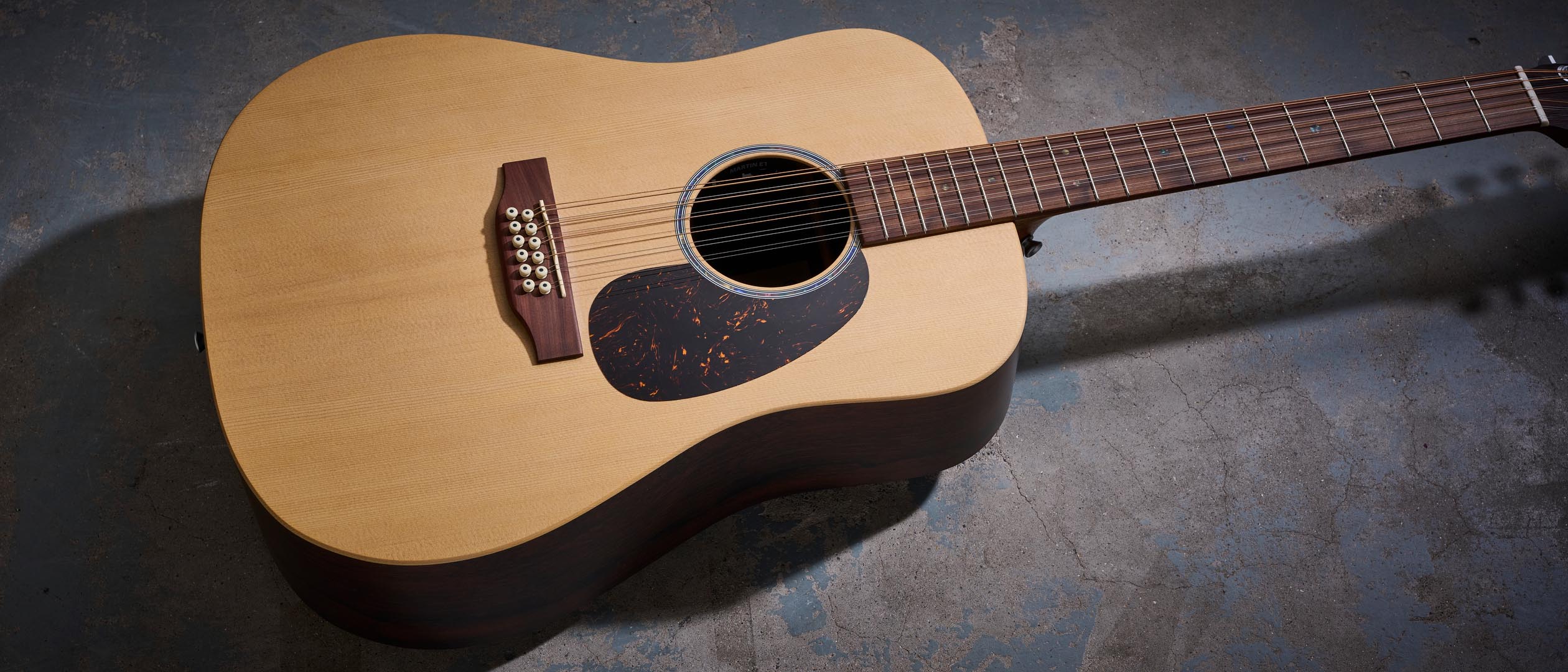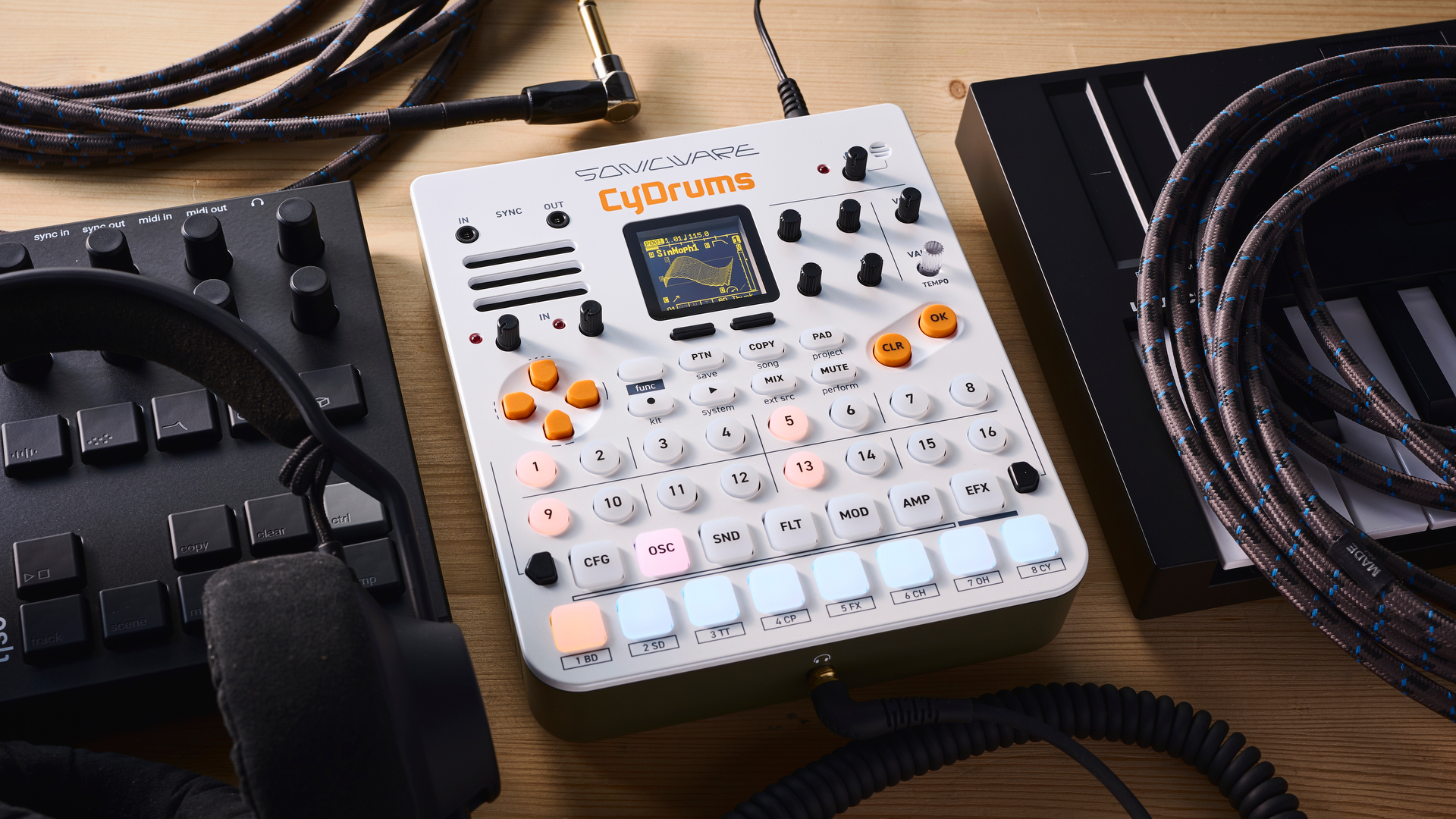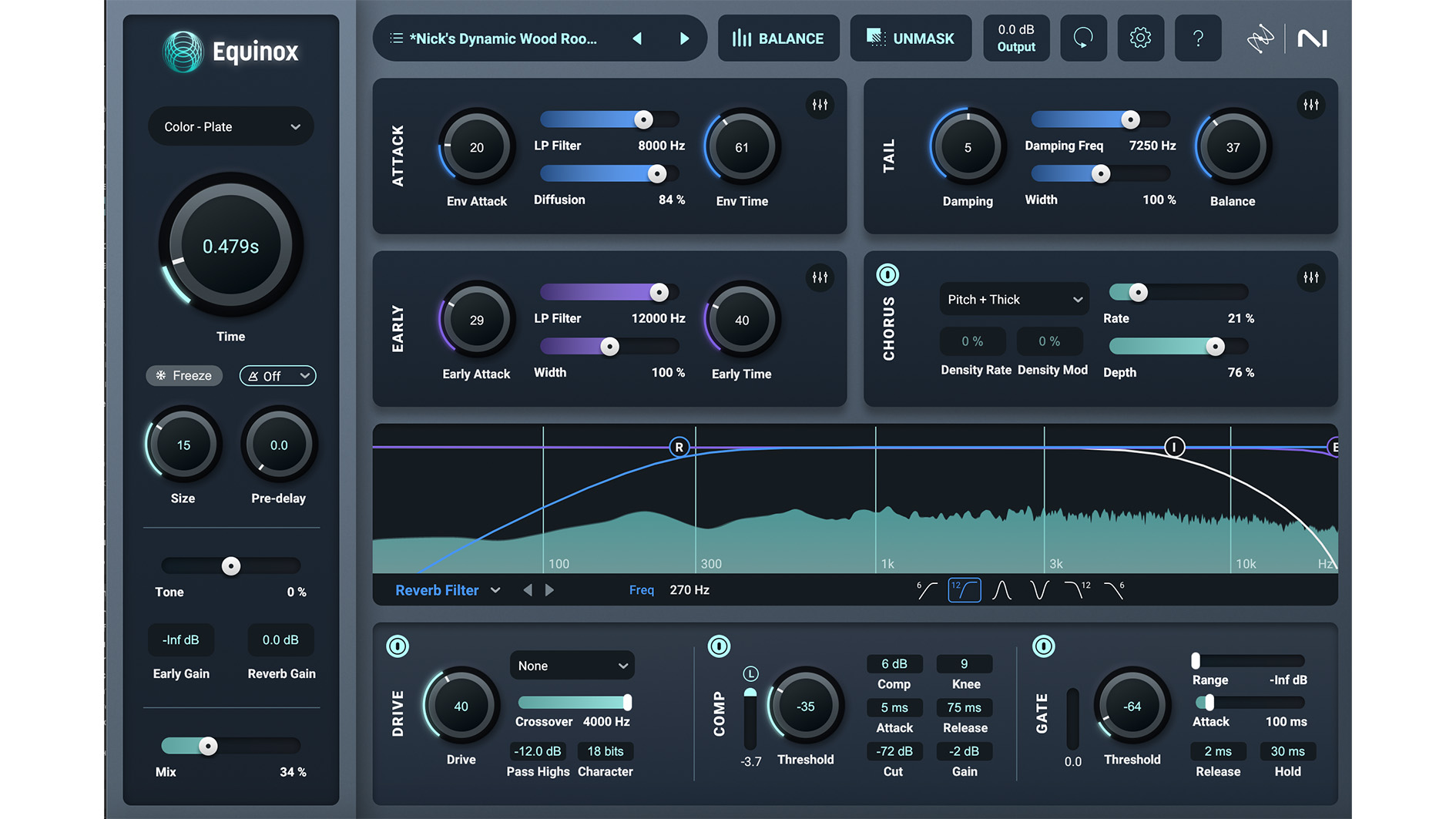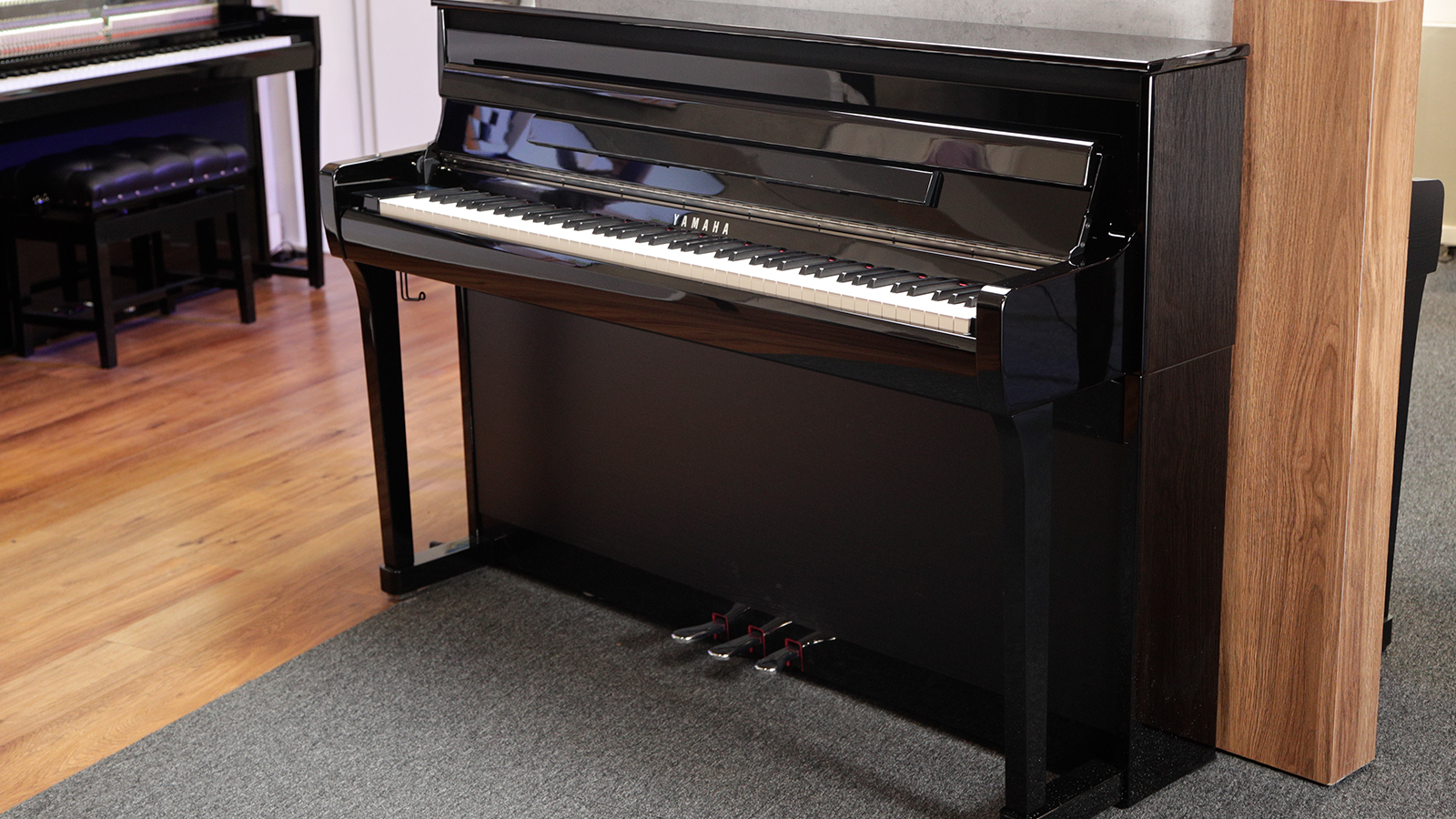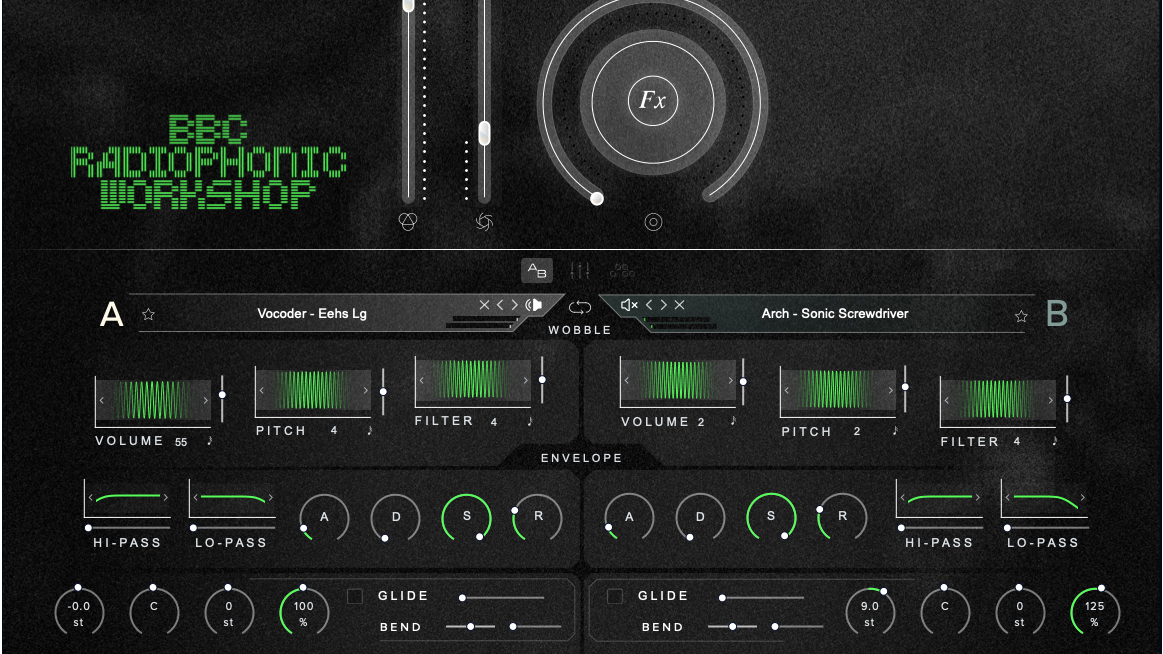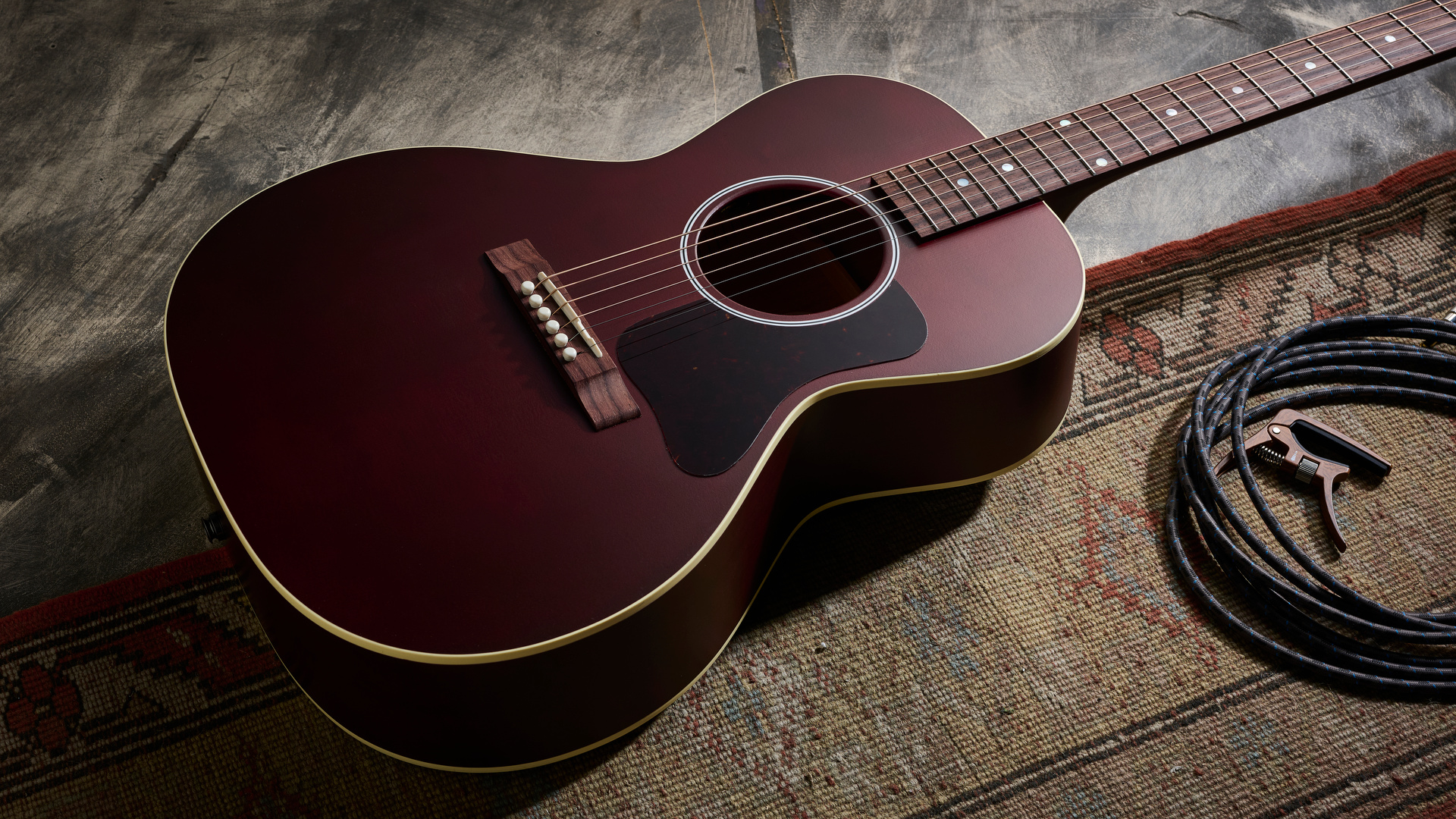MusicRadar Verdict
Mantis is a cool synth and, whilst it faces plenty of competition and has some quirks and limitations, it offers enough of its own take on a classic subtractive mono/duophonic architecture to stand out as something a little different.
Pros
- +
Flexible oscillator section.
- +
Great filters – especially the nicely resonant 12dB low-pass mode.
- +
Can work as a true two-voice (duophonic) synth.
Cons
- -
No user manual available yet.
- -
Not quite a four-voice synth.
- -
Front panel labels are quite small and pots do not feel as smooth or solid other premium synths.
MusicRadar's got your back
What is it?
PWM is the brainchild of Paul Whittington who, besides the name, bestows the company with a wealth of music-related product design experience. The brand's products so far have very much been a collaborative effort, and with some distinct nods to the past.
Paul has stated that PWM’s initial aim was to create three different synths, each embracing different sound-generation approaches. The first (Malevolent) was a modular, all-analogue collab with Future Sound Systems, and the third is likely to be an all-digital affair. The focus of this review though is a product that sits firmly between these two camps – Mantis, a ‘Duophonic Hybrid-Analogue Synthesizer’. In simple terms, this equates to digital oscillators running through analogue filters and VCAs, and the duophonic bit being an ability to play two notes at the same time – though as we’ll see, it’s a little more complex than this, and depends on how a sound is set up and played.
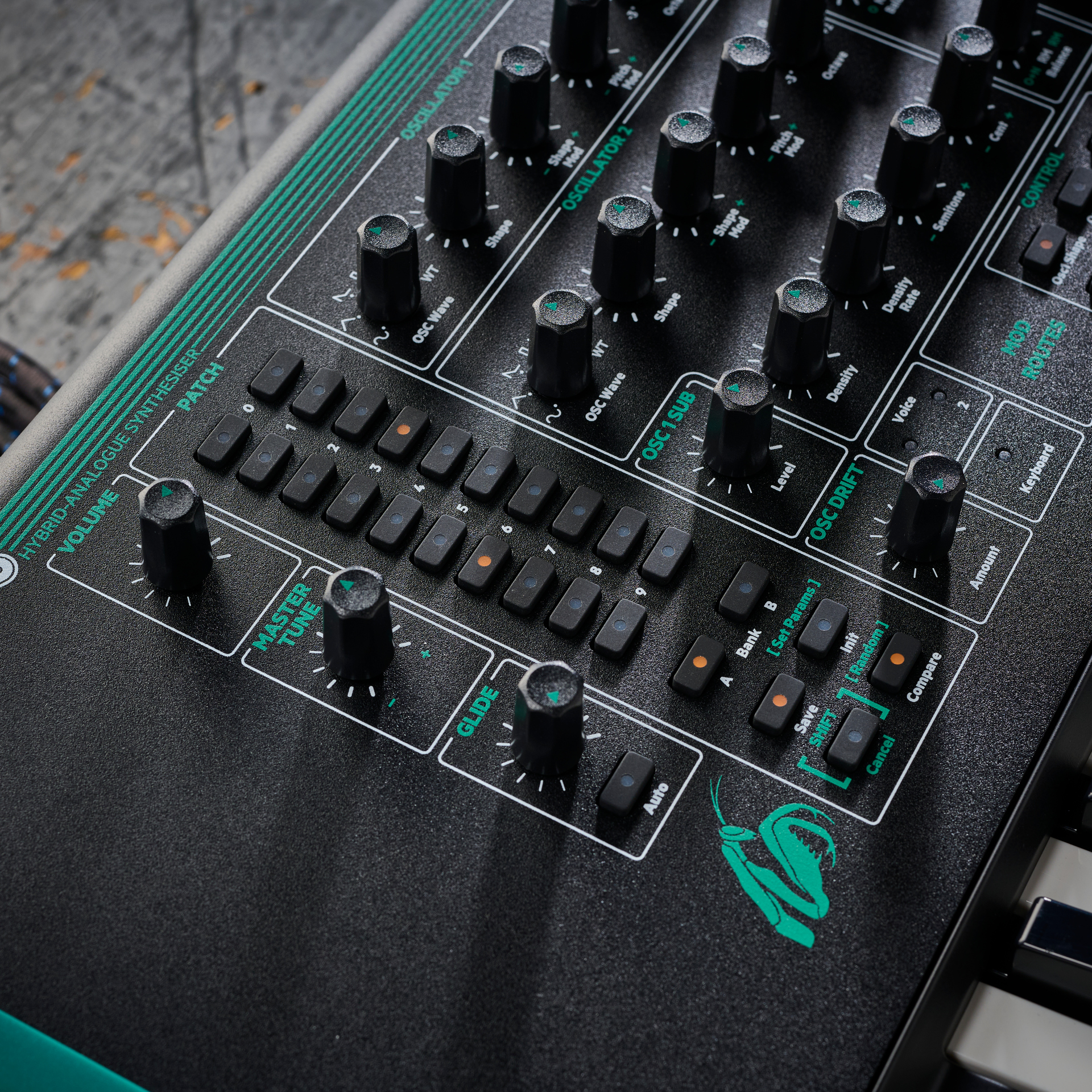
Before we move on to specifics, it is worth noting the lineage into which the Mantis fits, both in terms of design and personnel involved in its creation. The synth is heavily influenced by the, now legendary, EDP Wasp – a (relatively) low-cost hybrid synth from over 40 years ago. In fact, Chris Huggett, its original designer, contributed directly to Mantis, with his signature taking pride of place on its rear panel. Sadly, Chris died before the Mantis arrived in shops, but if his back-catalogue is anything to go by (OSC Oscar, Akai S1000, Novation BassStation, Supernova…), potential purchasers would be crazy not to at least take it for a spin.

On paper the Mantis is a duophonic hybrid-analogue synth, though you only get the full range of sound-shaping options in monophonic mode. This provides two oscillators and a sub-oscillator (plus ring modulator and noise source) running into a filter section consisting of 12 or 24dB/octave filters in a range of shapes alongside two LFOs and two independent envelopes. Control comes from the keyboard and arpeggiator or MIDI, and polish is provided by digital reverb and chorus.
Pricing
- Original price: $1,499 | £1,349 | €1,599
PWM Mantis was originally announced at Superboth 23, but it was a while before we got to see the hybrid synth on sale.
Prices have dropped since launch in most territories, with the biggest savings to be had in the UK, where you can get up to £300 off the original launch price.

Performance
Take the Mantis out of its box and you’ll find a dark knob-laden front panel and three-octave full-size keyboard. Oddly, you will also have to attach the two green side panels, which stay in place magnetically. Well, as long as you don’t try and lift the synth, in which case they’ll detach and you’ll be left holding them in your hand. We're not quite sure this approach works as well as it might.
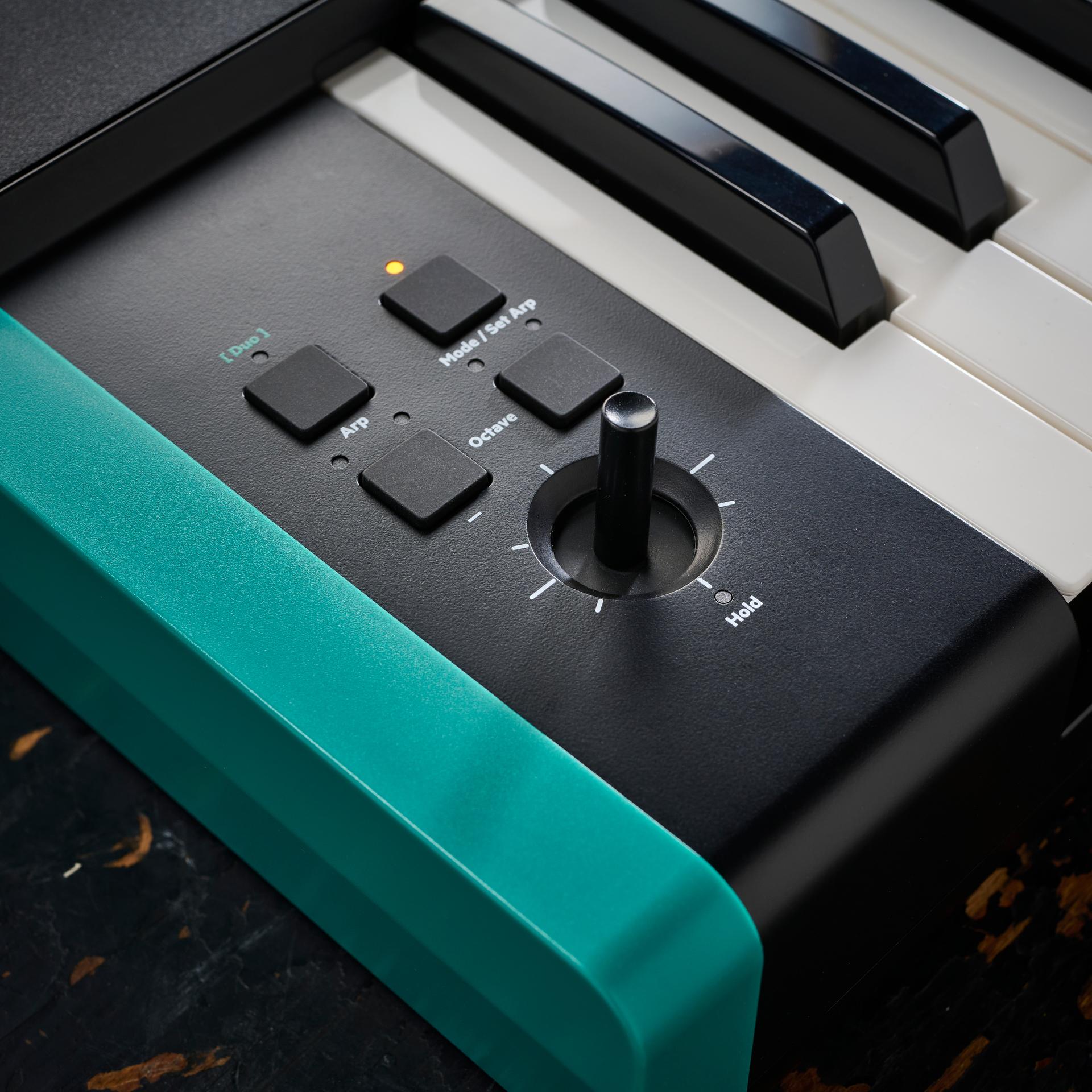
Other than this oddity, the synth doesn’t present anything too out of the ordinary in terms of connectivity or interface design. One quibble might be that the parameter controls themselves feel a little small (with some lateral movement), and those that function as rotary switches do also feel a little stiff to turn. A bigger issue, for us at least, is the rather small font used for control names. We're sure this could have been a little larger and clearer without sacrificing anything in terms of real estate.
That being said, the controls are laid out in a familiar and logical way, which shouldn’t present any problems to those with a broad familiarity with subtractive synthesis. In fact, we initially navigated presets and tweaked sounds without referring to the manual. It was at this point, when we wanted to delve deeper and see if we were missing anything, that it became apparent there was no manual in the box or even available to download. This is a real shame, as a decent manual, as well as serving as a useful reference, can really help sell a synth and point both active and prospective users to hidden functions or just cool and interesting stuff. This means that all views of the synth were based solely on interaction and the published spec list.
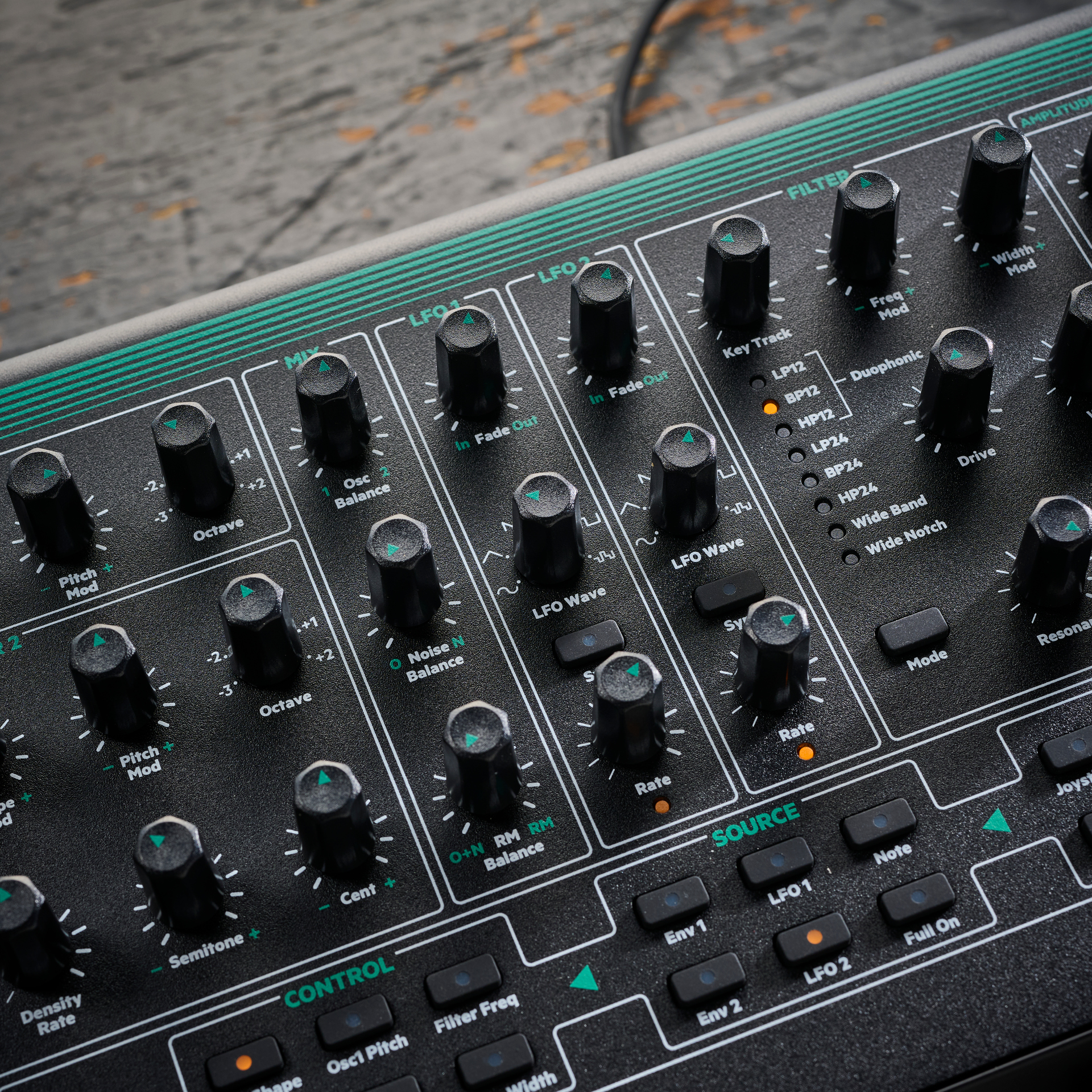
Delve a bit deeper into the architecture and and you’ll find some neat features which take Mantis beyond conventional subtractive monosynth territory. Each oscillator has additional ‘non-analogue’ wave options and a shape control which can be easily modulated, and Oscillator 2 adds a Density and Density Rate for dialling up ‘supersaw’ and other layered and detuned waves.
Also, if you are happy to forgo the 24dB/octave and ‘Wide’ filter types then the synth can play two voices at once. There is a also a Quad mode, but this loses independent filtering per voice and, though nice to have, can be a little frustrating in practice. In reality this means that the Mantis is more capable than many other monosynths with a paraphonic/duophonic feature.
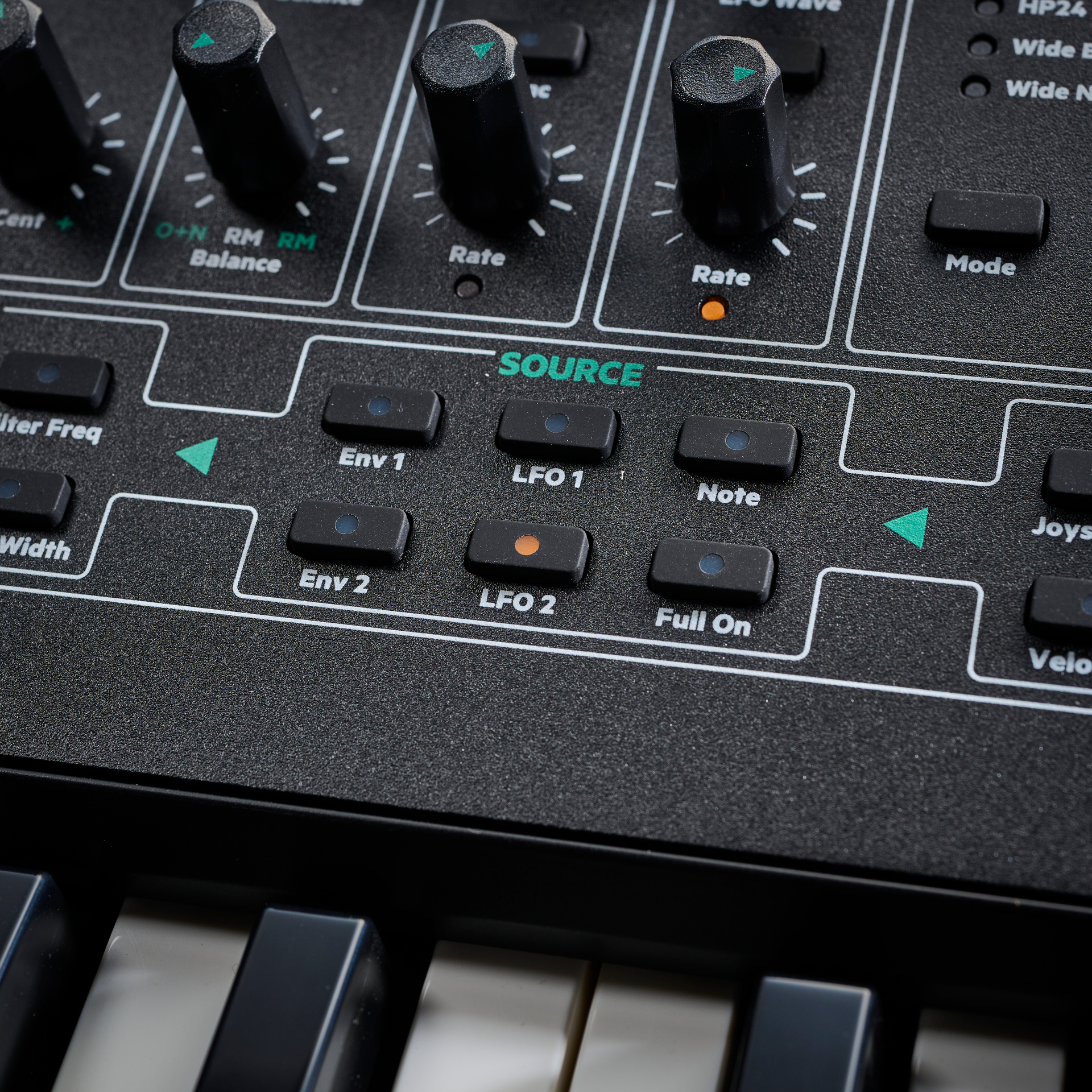
Verdict
Overall, we enjoyed using the Mantis. It is a decent-sounding and flexible synth. The oscillator topology allows you to create thick and complex audio even before you hit the filters. We really like the nicely resonant 12dB/octave low-pass filter, with our only criticism here being that the Mantis could have taken its usability up a significant notch if only PWM had added a couple more filter circuits, therefore allowing true 4-note polyphony. An overall high-pass filter (a la Roland’s '80s analogous) would also have been nice (and quite easy to implement we think), alongside an extra option of delay instead of the mono-only reverb.
There is no such thing as a perfect synth, but Mantis embraces aspects of past and present to deliver a synthesizer that is both easy to use and fun to play whilst maintaining a decent degree of programming depth and flexibility.
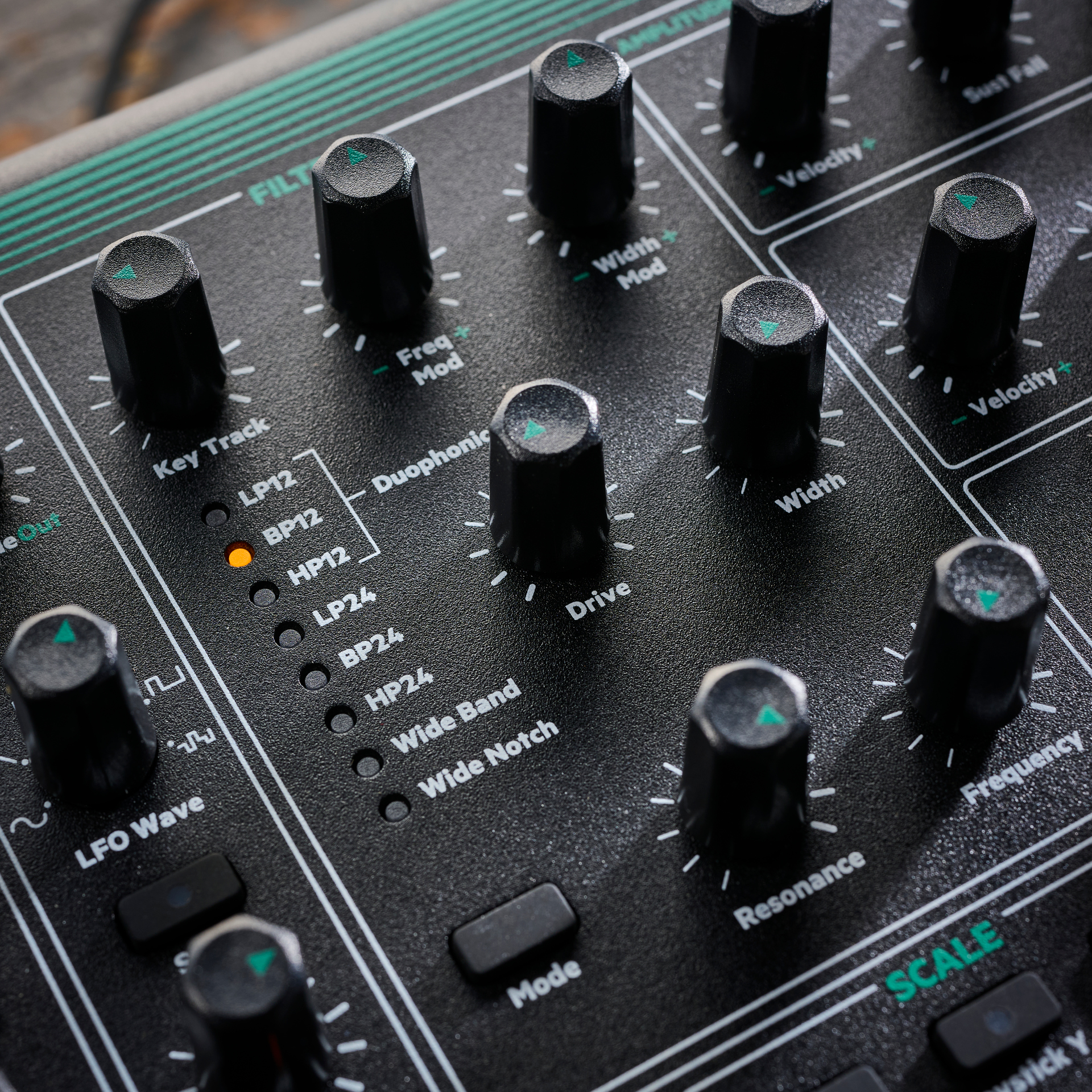
Hands-on demos
PWMusic
Alternatives
Another synth with classic lineage, and a Duo mode for those two note tones, though limited to the same filter.
Read more about Moog Subsequent 37
This is Korg’s version-straddling take on a synth legend. Duo mode here also allows you to play two notes at the same time (again through the same filter).
Read the full Korg ARP Odyssey FS Kit review
The original Bass Station was designed by Chris Huggett, and this latest (and long-running) incarnation now offers a paraphonic mode.
Read the full Novation Bass Station II review
Specifications
Key features | Duophonic with 2 analogue signal paths 2 digital oscillators plus sub-oscillator per voice (with Sine, Triangle, Saw and Pulse plus additional wave types) Ring Modulation and Noise Multi-mode filters with overdrive (Low, Band and High Pass with 12dB and 24dB configurations + ‘Wide’ series and parallel) types 2 LFOs 2 ADSR envelopes Arpeggiator Digital effects – reverb and chorus 37 full-size semi-weighted velocity-sensitive keys with channel aftertouch 200 patch locations |
Contact |
You must confirm your public display name before commenting
Please logout and then login again, you will then be prompted to enter your display name.
“I feel like that song had everything we needed to come back with”: Bring Me The Horizon’s Lee Malia on Shadow Moses, its riff and the secrets behind its tone, and why it was the right anthem at the right time
“I said, ‘Are we sure we can write a song about death?’”: The story of Mike + The Mechanics' classic No.1 The Living Years
“Without investment in music education our talent pipeline is at risk of drying up along with the huge opportunities for economic growth it brings”: UK Music draws up five point plan to “turbocharge” music education
